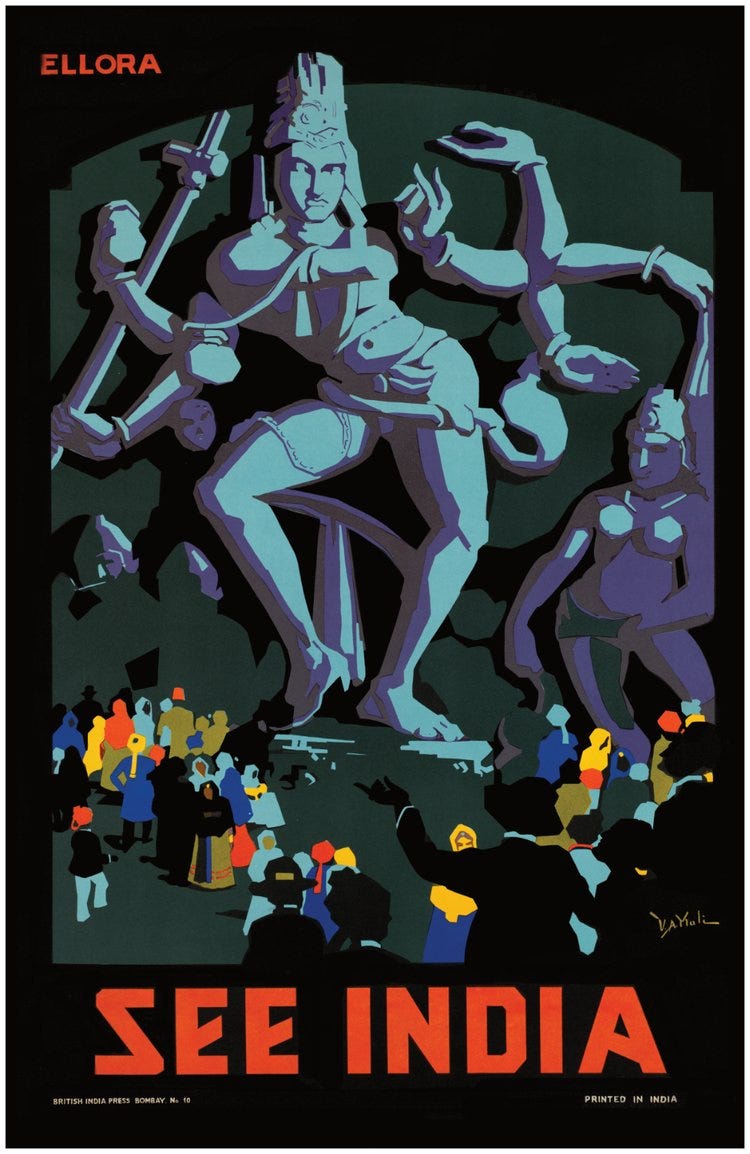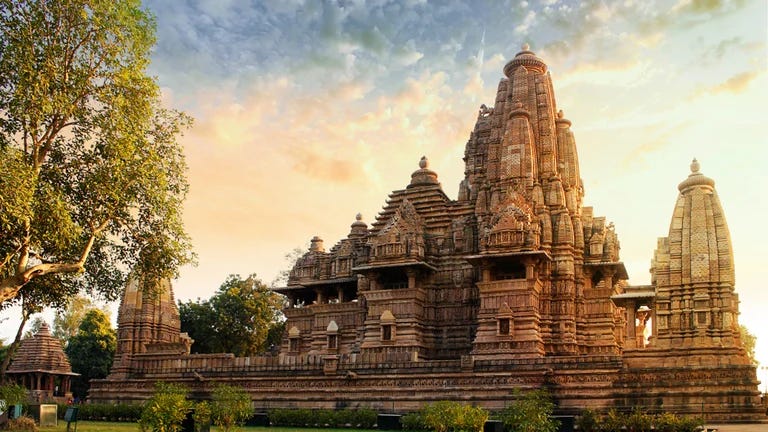Welcome to the Brown History Newsletter. If you’re enjoying this labour of love, please do consider becoming a paid subscriber. Your contribution would help pay the writers and illustrators and support this weekly publication. If you like to submit a writing piece, please send me a pitch by email at brownhistory1947@gmail.com.
Don’t forget to check out our SHOP and our Podcast.

Beyond the Erotic Art of the Khajuraho Temples
In a pivotal scene from the Bollywood movie “OMG 2”, the protagonist (played by Pankaj Tripathi), is on a quest to secure justice for his son (who was dismissed from school after a video of his self-pleasuring act goes viral), and he cites the narratives sculpted onto the Indian temples of Khajuraho, Ajanta, and Ellora as examples of unspoken tutors in India's timeless 'sex education.' For years, the mere mention of Khajuraho, an ancient Indian temple complex, sparks visions of ornate temples adorned with intriguing and sensual carvings. Yet, does this immediate mental canvas truly encapsulate the vibrant reality of Khajuraho, a UNESCO World Heritage site since 1986? While the erotic structures of Khajuraho remain the main tourist attraction to date, it is interesting to note that only 10 percent of the total sculptures are dedicated to erotica.
The Forgotten Marvels Rediscovered
Khajuraho hasn't always been in the global limelight. Though today it is the second most popular tourist attraction after the Taj Mahal (in Agra, Uttar Pradesh). By the 16th century very little was known about this magnificent temple complex and much had been lost beneath dusty sands. In 1838, a chance detour of British army captain T.S Burt at the behest of one his palanquin carriers brought this city back to life once again. This discovery by Burt was a new milestone for Khajuraho. It highlighted the spectacular erotic sculptures on exterior temple walls, and launched Western scholars and archaeologists along with traveling adventurers all at once into knowing about them.
However, the interest in Khajuraho does not lie only with its erotic carvings. While a part of the temple sculptures pleads to the carnal, most tell stories about religious ecstasy and are constructed in classical beauty. British engineer and archeologist Alexander Cunningham, who described his visit to Khajuraho in the early 1860s was stunned by its blatant display of eroticism. At the same time he was struck by the "richness of the carvings" and the "profusion of sculptures."






